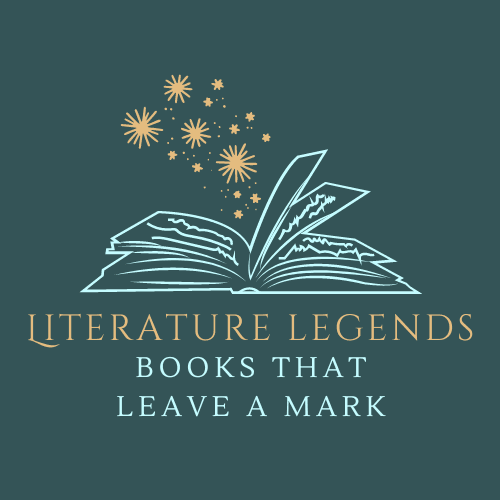Comic Fantasy: An Overview
Welcome to our exploration of Comic Fantasy, a delightful subgenre of fantasy literature that combines the whimsical and the humorous. Here, we’ll delve into what defines Comic Fantasy, its key characteristics, notable works, and authors, as well as its unique appeal to readers.
What is Comic Fantasy?
Comic Fantasy is a subgenre of fantasy literature that emphasizes humor and satire within a fantastical setting. It often features exaggerated characters, absurd situations, and playful narratives that poke fun at traditional fantasy tropes. While it retains the magical elements typical of fantasy, Comic Fantasy subverts expectations by infusing laughter and wit into the storytelling.
Key Characteristics of Comic Fantasy
Comic Fantasy is a subgenre of fantasy literature that incorporates humor and comedic elements into its narrative, setting, and characters. While it shares many characteristics with other fantasy subgenres, such as magical worlds, mythical creatures, and fantastical adventures, there are several key differences that set Comic Fantasy apart:
1. Tone and Humor: The most distinguishing feature of Comic Fantasy is its emphasis on humor. The tone is often light-hearted, satirical, or absurd, using wit and comedy to entertain. This can involve playful language, humorous situations, and exaggerated character traits. In contrast, other fantasy subgenres may focus on serious themes, epic quests, or darker elements.
2. Parody and Satire: Comic Fantasy often parodies traditional fantasy tropes and conventions. Authors may exaggerate common fantasy elements to highlight their absurdities or critique societal norms. This self-referential style can lead to a playful deconstruction of the genre itself, unlike more serious subgenres that may take their narratives at face value.
3. Characterization: Characters in Comic Fantasy are often quirky, eccentric, or caricatured, which can lead to humorous interactions and situations. While other fantasy subgenres may feature complex character development and serious arcs, Comic Fantasy often prioritizes comedic interactions and absurd scenarios over deep character exploration.
4. Plot Structure: The plots in Comic Fantasy can be more episodic or whimsical, allowing for digressions and comedic interludes. While traditional fantasy often follows a structured quest or battle against evil, Comic Fantasy may prioritize humorous encounters and misunderstandings over a cohesive narrative.
5. World-Building: The world-building in Comic Fantasy can be imaginative and fantastical but often includes elements that are deliberately nonsensical or illogical. This contrasts with other fantasy subgenres that may focus on creating intricate, consistent worlds with their own rules and histories.
6. Audience Expectation: Readers of Comic Fantasy often seek entertainment and laughter, whereas readers of other fantasy subgenres may be looking for epic adventure, moral dilemmas, or immersive world-building. The expectations for tone and style can significantly influence how stories are crafted and received.
Examples of Comic Fantasy include works like Terry Pratchett’s “Discworld” series, Douglas Adams’ “The Hitchhiker’s Guide to the Galaxy,” and Christopher Moore’s novels. These works exemplify the blend of humor and fantasy, showcasing how the genre can entertain while also providing commentary on broader themes.
Comic fantasy is a subgenre that blends elements of fantasy with humor, often parodying traditional fantasy tropes. Some of the main authors associated with comic fantasy literature include:
1. Terry Pratchett: Perhaps the most famous author in this genre, Pratchett is best known for his “Discworld” series, which combines satire, humor, and fantasy in a richly developed world.
2. Douglas Adams: While primarily known for “The Hitchhiker’s Guide to the Galaxy,” which is more science fiction than fantasy, Adams’ work features many elements of comic fantasy, including absurdity and whimsical characters.
3. Piers Anthony: Known for his “Xanth” series, Anthony’s books are filled with puns and humorous situations, set in a magical land where wordplay is a central theme.
4. Christopher Moore: His novels often blend humor with fantastical elements, such as “Lamb: The Gospel According to Biff, Christ’s Childhood Pal,” which offers a comedic take on biblical stories.
5. Neil Gaiman: While Gaiman’s work often straddles various genres, books like “Good Omens,” co-written with Terry Pratchett, showcase his ability to blend humor with fantasy.
6. Tom Holt: Known for his humorous takes on mythology and history, Holt’s works often blend fantasy elements with comedic storytelling.
7. Jasper Fforde: His “Thursday Next” series is a clever mix of fantasy, literary parody, and humor, exploring a world where characters can interact with literary works.
These authors have made significant contributions to the comic fantasy genre, each bringing their unique style and humor to the fantastical elements of their stories.

